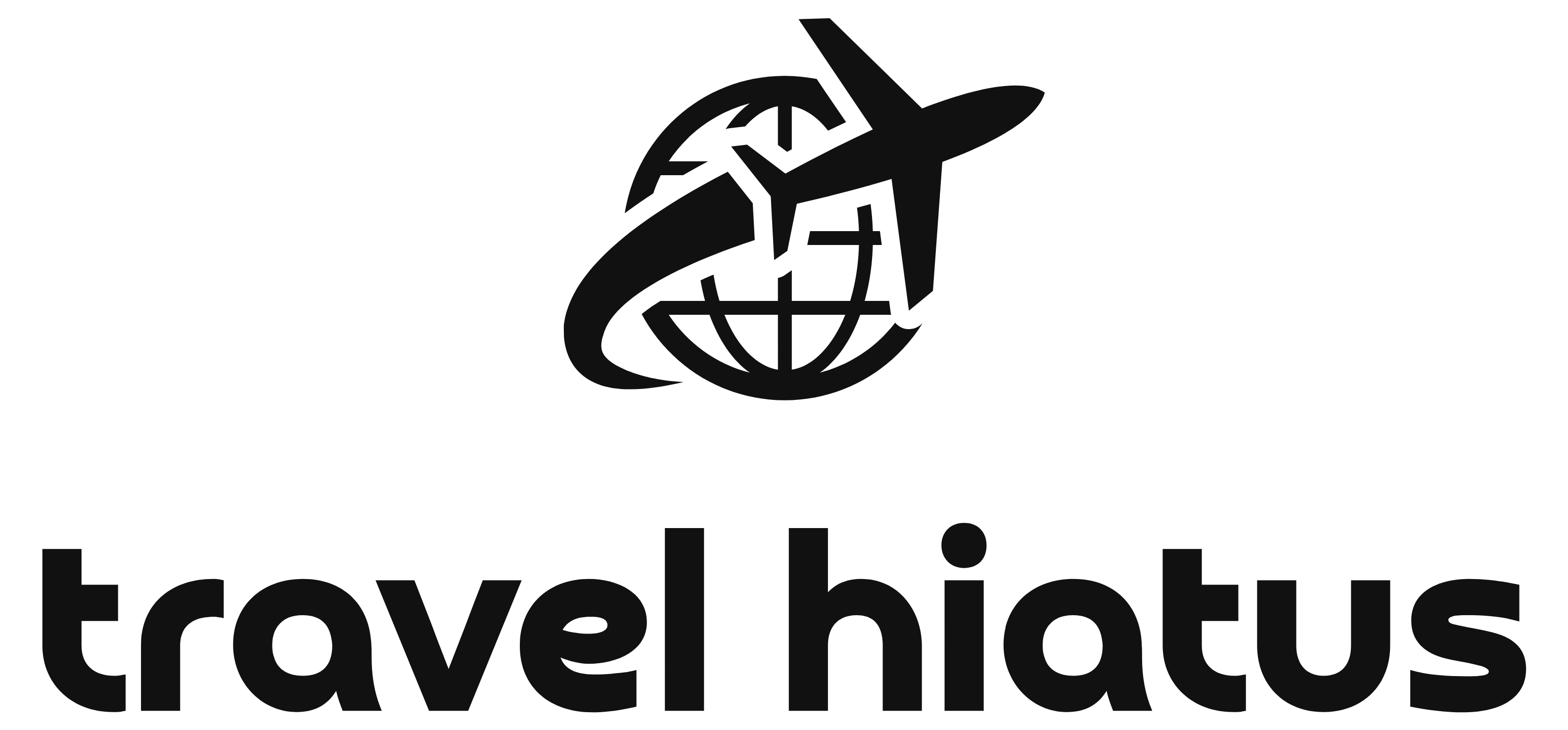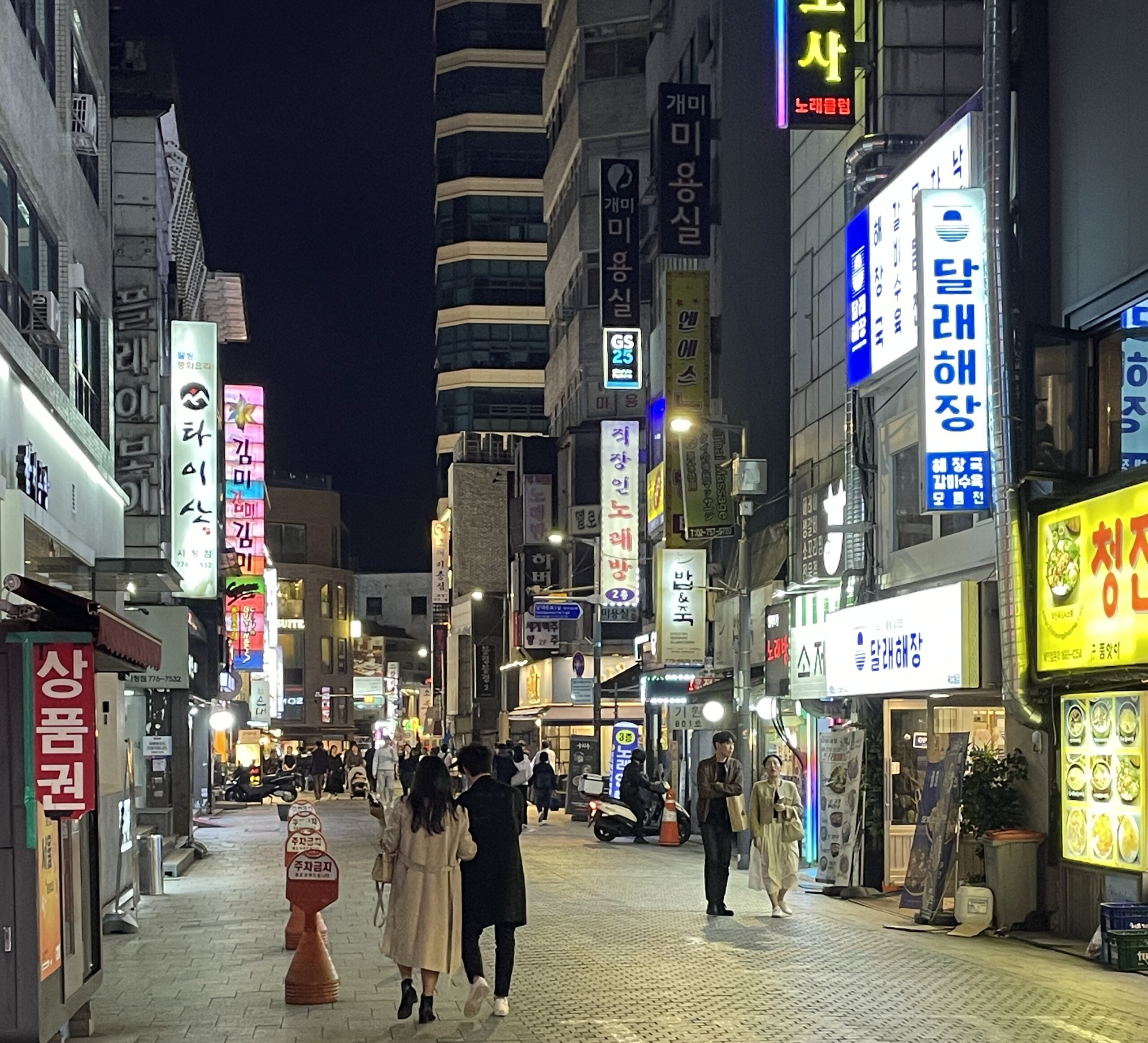3 Days in Seoul Itinerary: Ultimate First-Time Guide
Seoul is one of the most exciting cities in Asia, a vibrant mix of tradition, modernity, culture, and food.
But with so many things to do, planning your first visit can quickly feel overwhelming.
Don’t worry! This complete 3-day Seoul itinerary lays out exactly what to see and how to see it, so you can experience the best of the city in just three days.
Where you stay makes a big difference. For first-time visitors, consider staying in Myeongdong or Insadong, two of the most central and convenient areas in Seoul.
Both neighborhoods are packed with restaurants, shops, and attractions, and they’re well-connected by public transportation.
If you’re planning to stay five days or longer and want a more local experience, check out some of Seoul’s other neighborhoods that offer a slower-paced, authentic feel while still keeping you close to the action.
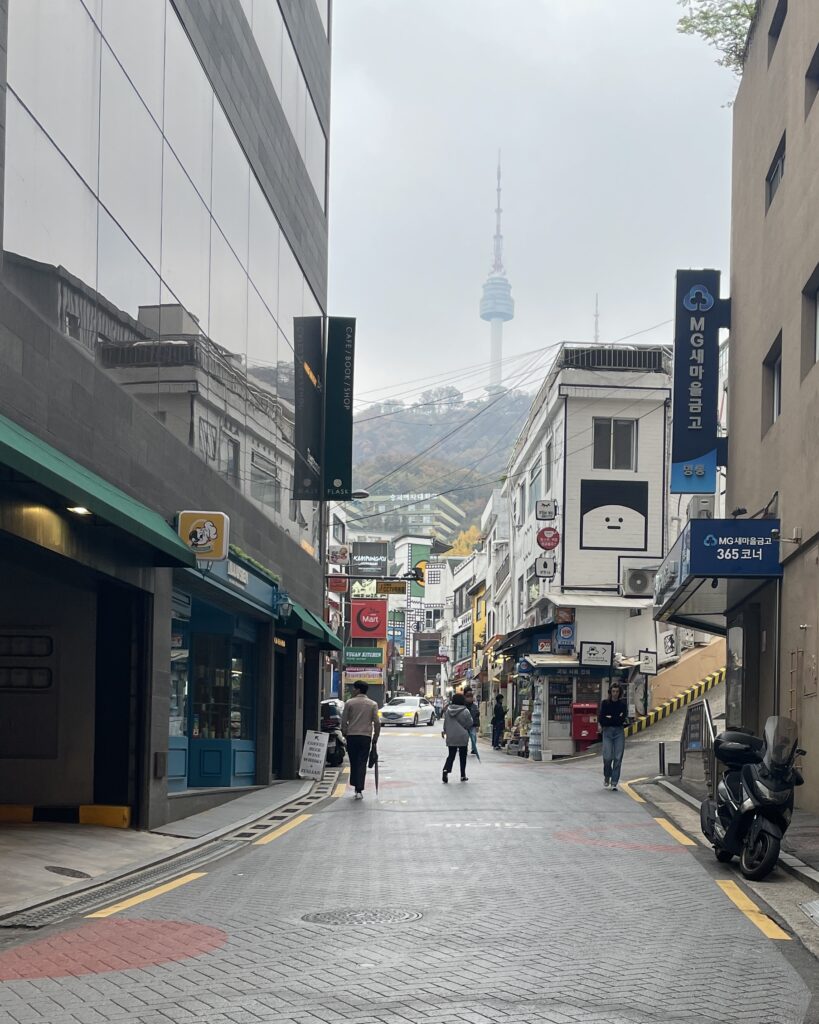
Quick Tips for Visiting Seoul
- Google Maps doesn’t work in Seoul. Download and use KakaoMaps.
- If you want to get around by taxi, use traditional cabs or KakaoT, a ride-sharing app.
- ESim with Airalo: Download the Airalo app and purchase an ESIM for your phone data so you’ll have data as soon as you land!
- Don’t tip in Korea. It’s considered rude and offensive. There’s no reason ever to tip in Korea.
- Get a reloadable T-Money card to use for Subway/Buses; get it at convenience stores like GS25 or 711
- Google Translate is okay, but Papago offers a more accurate translation from English to Korean.
- Don’t point at people if you’re trying to refer to someone. It’s considered rude in Korea.
- Most places accept credit cards and cashless payments – if you need cash, use ATMs in 711 or GS25 stores.
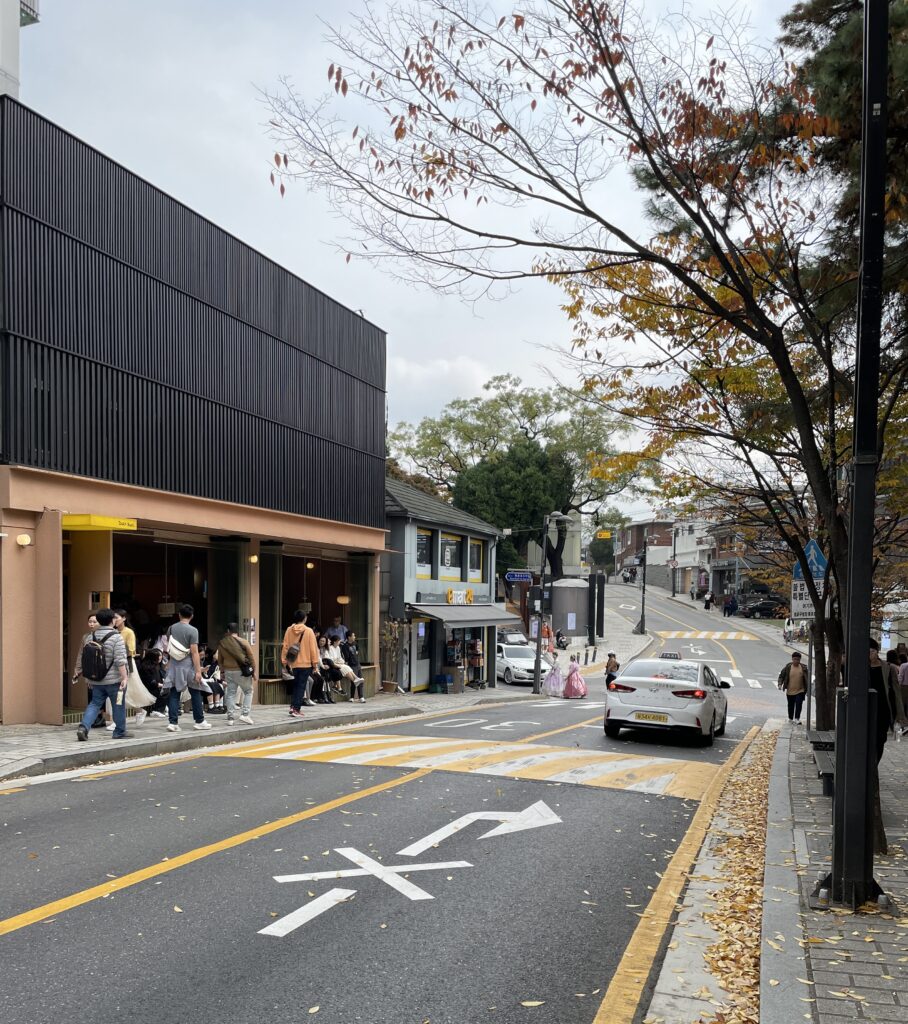
Day 1 in Seoul
Your first day in Seoul starts with exploring the cultural side of the capital. No trip to Seoul is complete without visiting the city’s culturally rich attractions.
Once you’ve had breakfast, if you’re looking for something tasty and quick, I recommend IsaacToast, my favorite breakfast sandwich in the city. It’s a popular Korean sandwich/cafe franchise.
The three attractions mentioned below are all nearby and within walking distance. You can take a taxi if you really don’t want to walk, but there’s no reason to, walk around and explore the streets of Seoul!
Insadong Hanok Village
Strolling through Insadong Hanok Village is like stepping back into Korea long ago. The charming village is full of beautifully restored traditional homes, showcasing the beauty of Korean architecture.
Throughout Insadong Hanok Village you’ll also find several antique shops, galleries and traditional Korean tea houses to visit.
I recommend you visit one of the tea houses in the village, it’s an experience in itself.
You’ll also spot local vendors selling many different souvenirs and traditional crafts. Despite how modern Seoul is today, the Hanok Village offers a clear glimpse of Seoul’s past way of life and atmosphere.
Gyeongbokgung Palace
Located in the center of the city is Gyeongbokgung Palace, a beautiful palace of the Joseon Dynasty in Seoul. It was first built by King Taejo in 1395.
As you enter the beautiful palace, you’re met with majestic gates, stunning pavilions, and meticulously landscaped gardens. The royal residences give visitors a glimpse of how the dynasty used to live.
Next to the palace is the National Palace Museum of Korea, where you can find a collection of artifacts and treasures.
This palace is the largest and most significant of the Five Grand Palaces in Seoul and is one of Seoul’s most famous attractions, so it can’t be missed when visiting!
Another nearby palace you can visit if you’re interested in learning more about Korean heritage is the Changdeokgung Palace, and it’s nearby.
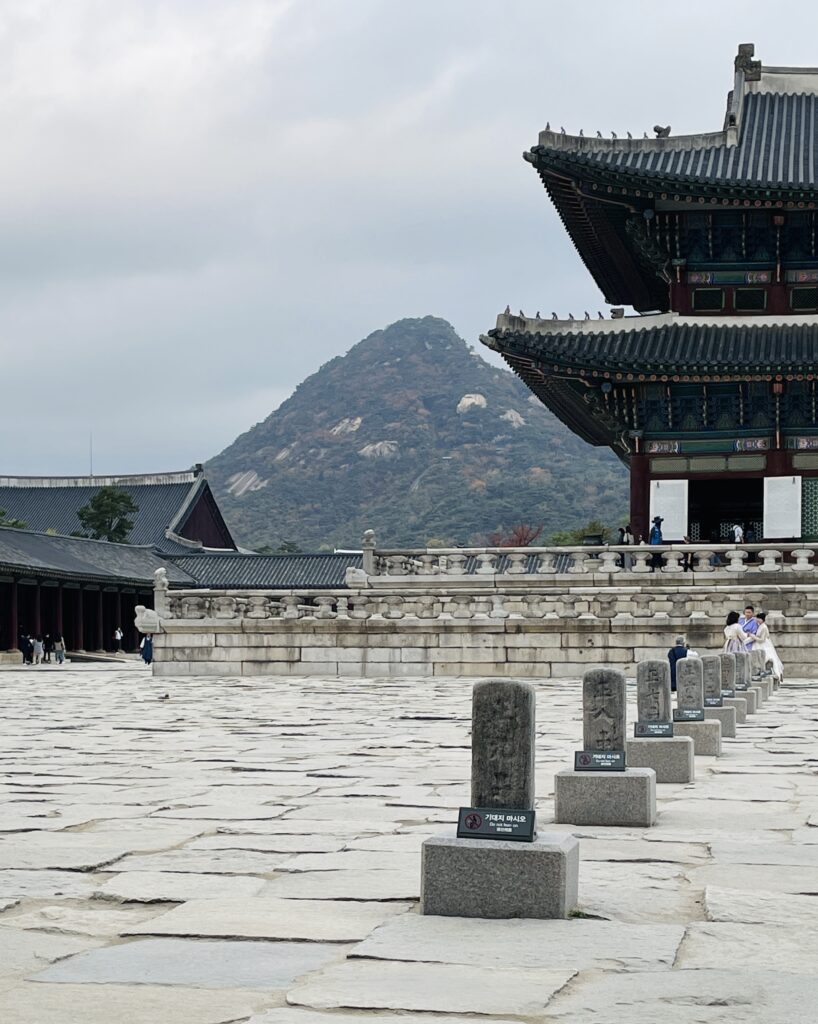
Myeongdong Night Market
I’d imagine that after exploring all day in Seoul, you’ve already gone for dinner. Well, I hope you didn’t eat too much because this next attraction is another must-experience in Seoul!
The popular Myeongdong Night Market is a bustling, fun market that hosts over 100 to 150 vendors in the streets of Myeongdong every evening. The market opens at 5:00 PM and runs until 10:00 PM.
Here, you’ll find countless delicious Korean street foods to try, including pancakes, meat skewers, grilled cheese, and more!
At the night market, there are several souvenir stands selling goods and shops surrounding it. It’s the perfect place to do some Korean souvenir shopping!
By the way, I’d recommend you come early to Myeongdong and explore the area. The streets are quite picturesque. Once vendors show up, the streets get quite busy, and it’s not the same!
Taste Myeongdong’s night market flavors:
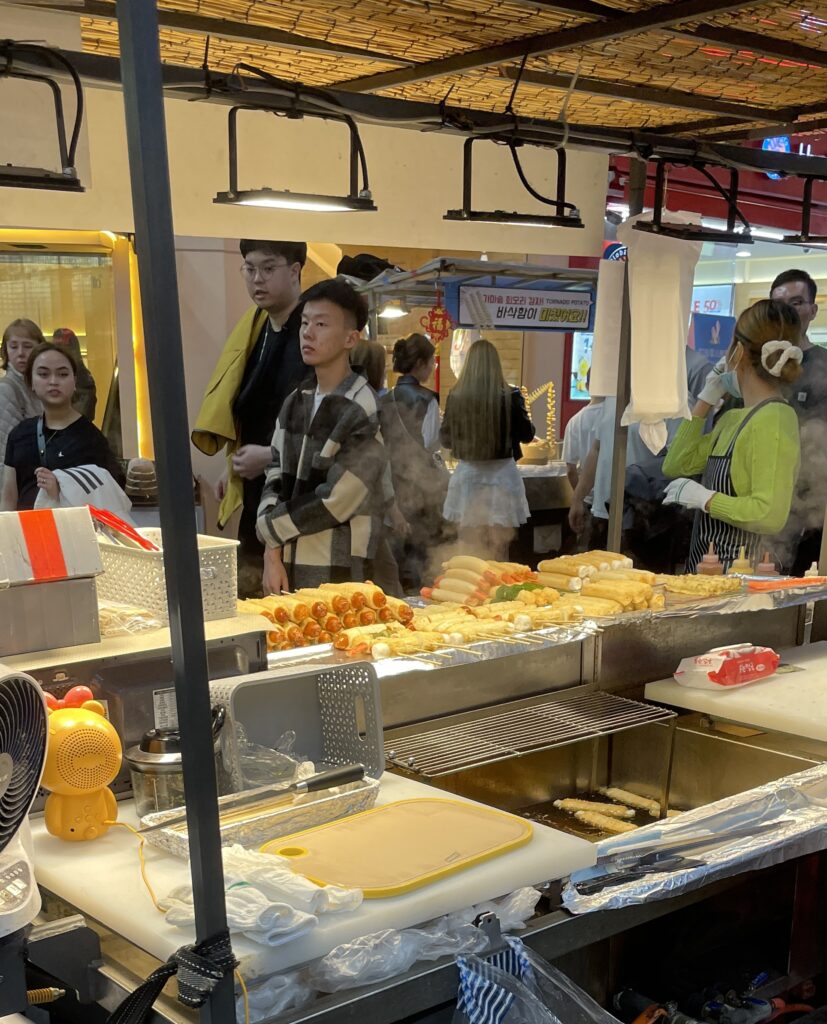
Day 2 in Seoul
It’s day 2 in Seoul; let the adventures continue. Today, you’ll explore Seoul’s most famous park and visit the city’s tallest tower, which can be spotted throughout the city.
Then, you’ll visit one of the city’s oldest and most vibrant day markets, followed by an evening in Hongdae, Seoul’s most vibrant neighborhood.
N Seoul Tower & Park
Namsan Park, the largest park in Seoul and home to the famous N Seoul Tour, is located just a 15-20 minute walk south of Myeongdong. It is highly recommended to visit Namsan Park!
As you walk around the park and slowly make your way up the mountain, you’ll consistently be meet with breathtaking panoramic views of the city. Also views of the N Seoul Tower ahead, which stands at 236 Meters high.
If hiking isn’t for you, not to worry, you can take a cable car to the top of the park instead. Cable car tickets are 12k KRW for one way and 15k KRW for a roundtrip ticket.
At the top, there are several different observation decks, lovely decor, a cafe, a souvenir shop, and washrooms.
Namdaemun Market
Famous for being one of the oldest markets in Seoul, Namdaemun Market is a bustling day market that is open from 9:30 AM to 5:30 PM and closed on Sunday.
The market is home to over 10,000 shops, stalls, and street vendors, offering various goods, ranging from clothing, accessories, and electronics to fresh produce, spices, and traditional Korean crafts.
There are many delicious street food vendors around the market. After some shopping, be sure to sample a few foods.
The market is an excellent way to experience one of Seoul’s traditional markets and bargain hunt for deals on various goods.
Experience Namdaemun Market’s street food scene on a guided tour:
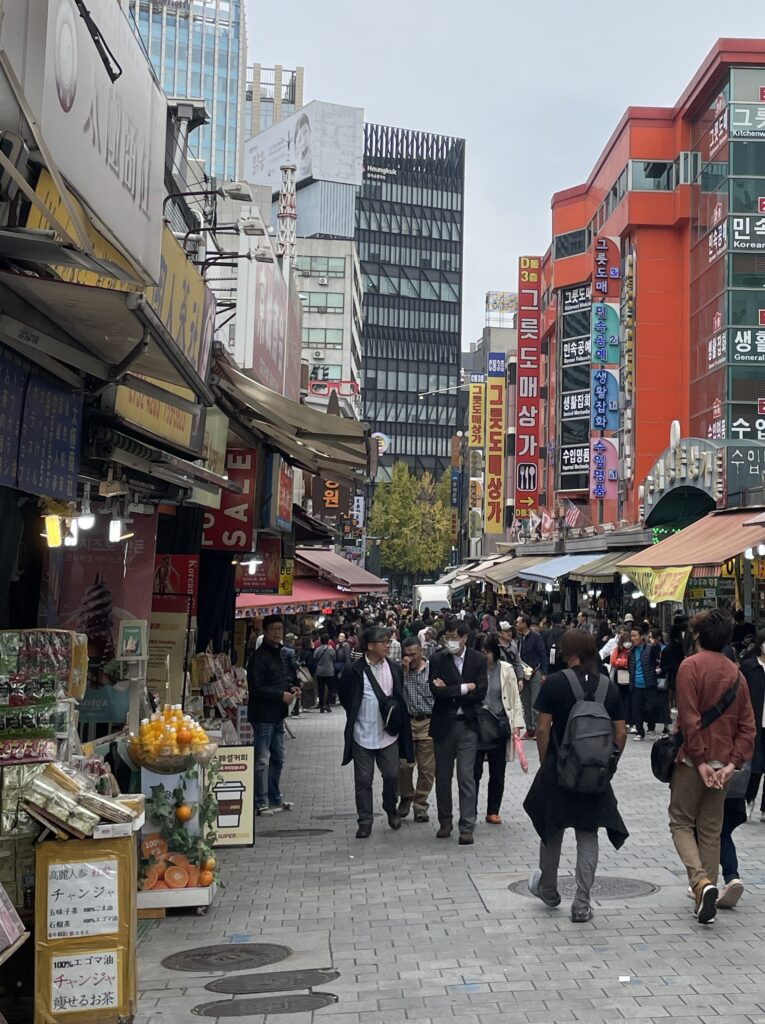
Visit Hongdae
Hongdae is one of Seoul’s most popular neighborhoods. The area is known for its extensive walking street, where you can find countless unique boutiques, restaurants, art galleries, karaoke bars, arcades, and more.
Walking around Hongdae’s streets, you’ll notice the area is a hub for Seoul’s indie music and arts scene.
The trendy area is also known for its wide variety of international cuisine, excellent Korean food, and lively nightlife.
Visit Hongdae in the evening, or if you have time, come earlier during the day to explore the neighborhood. For a restaurant recommendation in Hongdae, try out Doma, an excellent Korean BBQ restaurant.
If you don’t make it to Hongdae earlier in the day, visit Hongdae for dinner and then continue your evening on the lively walking street, watching street performances, trying some street food, visiting an arcade/karoke bar, or perhaps continuing the night at a nightclub or cozy concert hall!
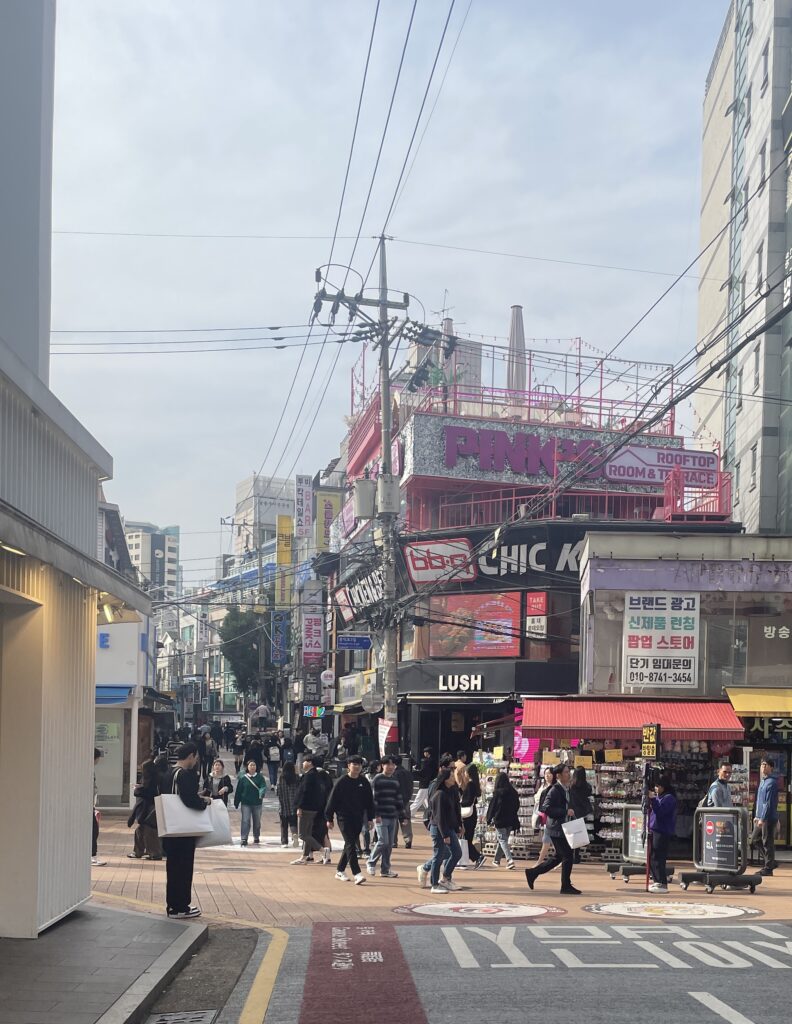
Day 3 in Seoul
Seeing that it’s your last full day in Seoul, on the third day, it’s best to experience less so you’re well-rested to travel the next day.
But if that’s not your preference, don’t worry, there’s plenty more to do suggested as an optional 4th day below, which you could possibly fit into your third day of adventures!
Yongsan Park & National Museum of Korea
Conveniently located next to one another, Yongsan Park is a charming park featuring lush gardens, walking trails, and ponds. It is the perfect spot to relax for the afternoon.
Consider buying a few snacks from GS25 and enjoying them at the park.
Next to the park is the National Museum of Korea, one of the city’s most significant museums showcasing Korea’s rich history and heritage.
The museum contains a large collection of ancient artifacts and traditional Korean artworks.
Those who enjoy history will appreciate visiting it, if mueums aren’t for you, you can skip it!
Visit Gangnam
Continue the later part of your third day and evening in Gangnam, a bustling district known for its parks, excellent restaurants, museums, impressive shopping malls, and vibrant nightlife.
Main attractions to visit in Gangnam are the COEX Mall, known as one of the largest underground malls in Asia, the Seolleung and Jeongneung tombs, and Garosu-gil Street, a notable and picturesque street in the area.
Also, check out the Starfield Library, an extensive large library with impressive modern architecture.
Once you’ve enjoyed dinner at one of the many great restaurants in the area, you can enjoy a laidback evening at one of Gangnam’s many riverside parks or explore the area’s nightlife, with many bars and nightclubs in the area.
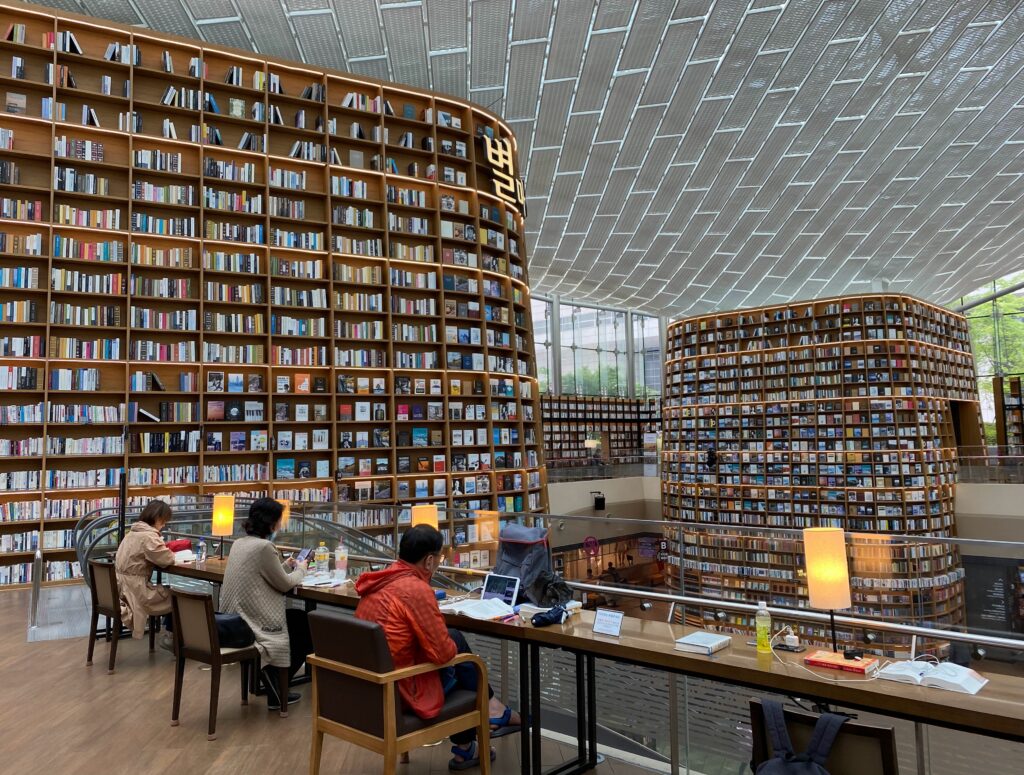
(Optional) Day 4
For visitors staying in Seoul for longer than three days, or perhaps you’ve convinced yourself to stay longer because of how much you’ve enjoyed it, here’s a few more things to do in Seoul on your fourth day!
Dongdaemun Design Plaza
Those who appreciate architecture will really want to visit the Dongdaemun Design Plaza (DDP). Renowned architect Zaha Hadid designed this standout masterpiece, a spectacle.
The cultural hub has many uses: a museum, exhibition area, and multi-purpose convention center. Fashion, trade shows, and many significant events occur at the DDP.
Walking around the DDP, you’ll encounter a beautiful contemporary but futuristic design. DDP is a must-visit destination for those seeking a creative and inspiring experience in Seoul.
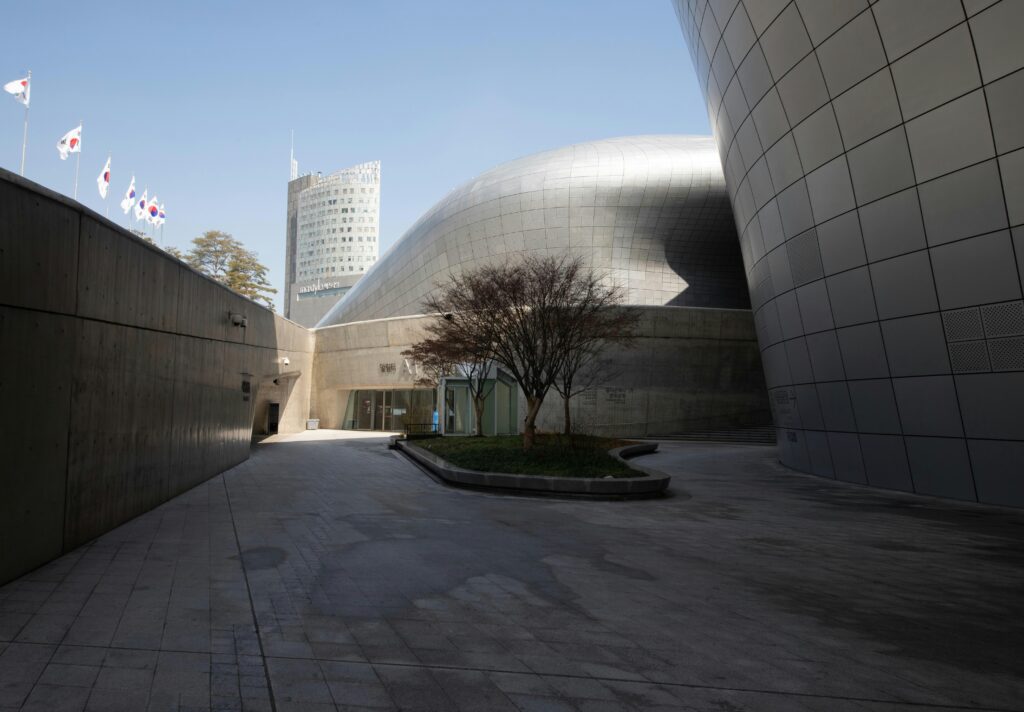
Gwangjang Market
Who’s up for some shopping? Gwangjang Market is a vibrant and historic market located in the Dongdaemun area, close to the DDP, and a must-visit.
Established in 1905, it is one of the oldest and largest traditional markets in South Korea. It’s open daily from 9:00 AM to 6:00 PM.
The bustling day market offers various high-quality goods to purchase and various clothing, textiles, produce, and plenty of street food to try!
As soon as you arrive, you’ll hear the sounds of products moving around the market, the smells of fresh foods served, and plenty of impressive vendor stands.
The food alley at Gwangjang Market is quite impressive. If you’re a foodie looking for street food, this is your day market to visit.
Cheonggyecheon Park
Located amongst the hustle and bustle of Seoul, between Insadong and Myeongdong, is Cheonggyecheon Park.
The park’s centerpiece is the Cheonggyecheon Stream, a restored waterway that meanders amongst nature.
Lined with lush greenery, trees, bridges over the beautiful stream that flows amongst it all. The park’s centerpiece is the Cheonggyecheon Stream, a restored waterway that meanders amongst nature.
The lovely urban park is below the main ground level, offering a natural escape for locals and tourists.
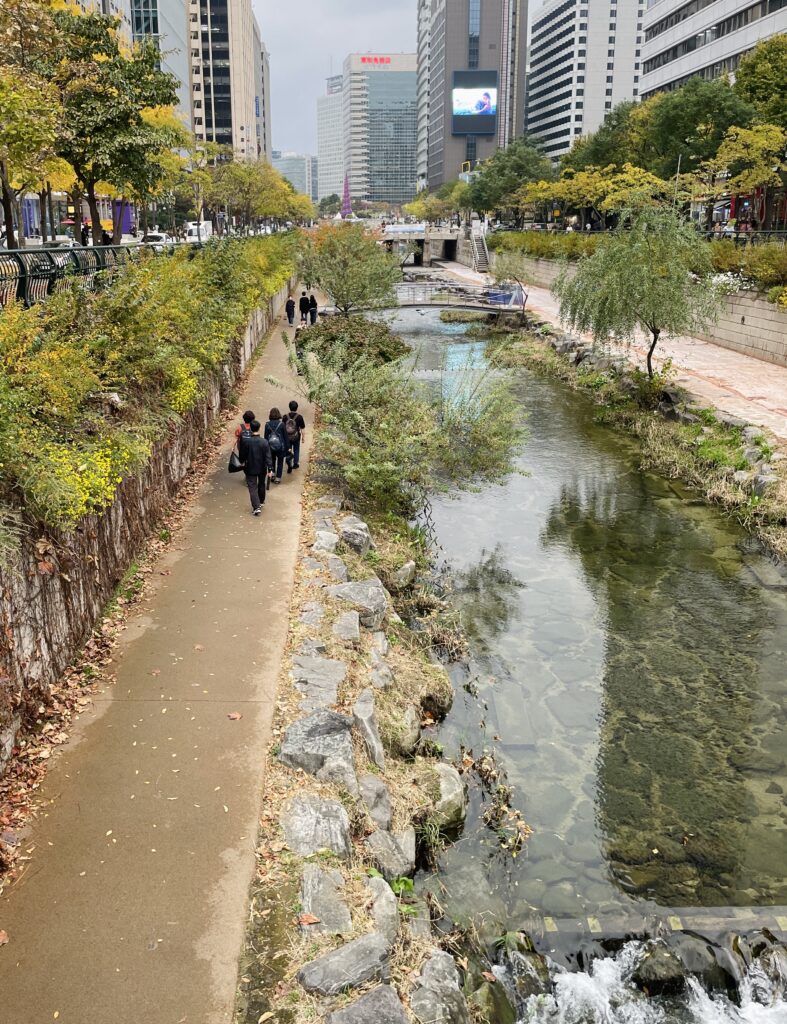
When to Visit Seoul
Seoul has four seasons, and depending on the time you visit, it offers a different atmosphere. Each season offers various activities.
All seasons have their advantages, but if you don’t favor the heat, you’ll want to visit in the Spring, and if you’re not looking to experience any snow, don’t come in the winter!
Spring: April to June
Spring is an excellent time to visit Seoul, with temperatures ranging from 10 to 20 Celsius (50 to 68 Fahrenheit).
It’s an ideal time to explore Seoul’s many outdoor attractions, like its parks, palaces, and hiking trails.
These ideal midrange temperatures in the city allow for comfortable walks and outdoor activities. Also, Spring in Seoul offers a picturesque and enjoyable experience due to the yearly cherry blossom bloom.
Summer: July to August
In the Summer, Seoul becomes warm with some humidity, with average temperatures ranging from 23 to 30 Celsius (73 to 86 Fahrenheit).
It’s a vibrant season with cultural/music festivals, outdoor markets, and lively street performances.
From exploring the historic sites to enjoying the bustling nightlife, there’s always something happening in the city, and Summer is a great time to experience all that Seoul has to offer!
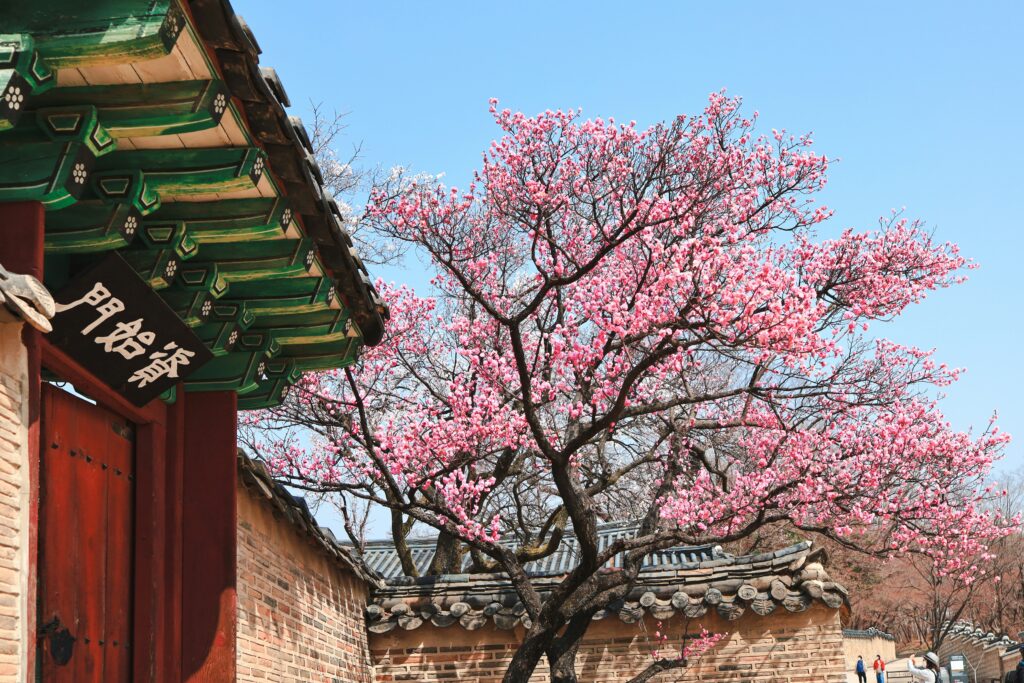
Autumn: September to October
Autumn in Seoul is another favorable season to visit, especially for those who prefer mild and comfortable temperatures between from 17 to 22 Celsius (63 to 72 Fahrenheit).
As the leaves change color, the city transforms into a picturesque landscape adorned with vibrant red, orange, and yellow hues.
It’s a perfect time to explore parks, gardens, and mountains like Namsan and Bukhansan.
Autumn in Seoul offers a serene and romantic ambiance, making it an ideal season for nature lovers, hikers, photographers, and those looking for a romantic gateway!
Winter: December to March
Winter in Seoul can get a tad chilly, with average temperatures ranging from -1 to -7 Celsius (30 to 19 Fahrenheit).
Seoul transforms into a winter wonderland as snow blankets the streets and parks. It’s the season for ice skating, skiing, and enjoying hot drinks at cozy cafes around the city.
Popular attractions in the city, such as Namsan Tower and Gyeongbokgung Palace, offer stunning views amidst a snowy backdrop.
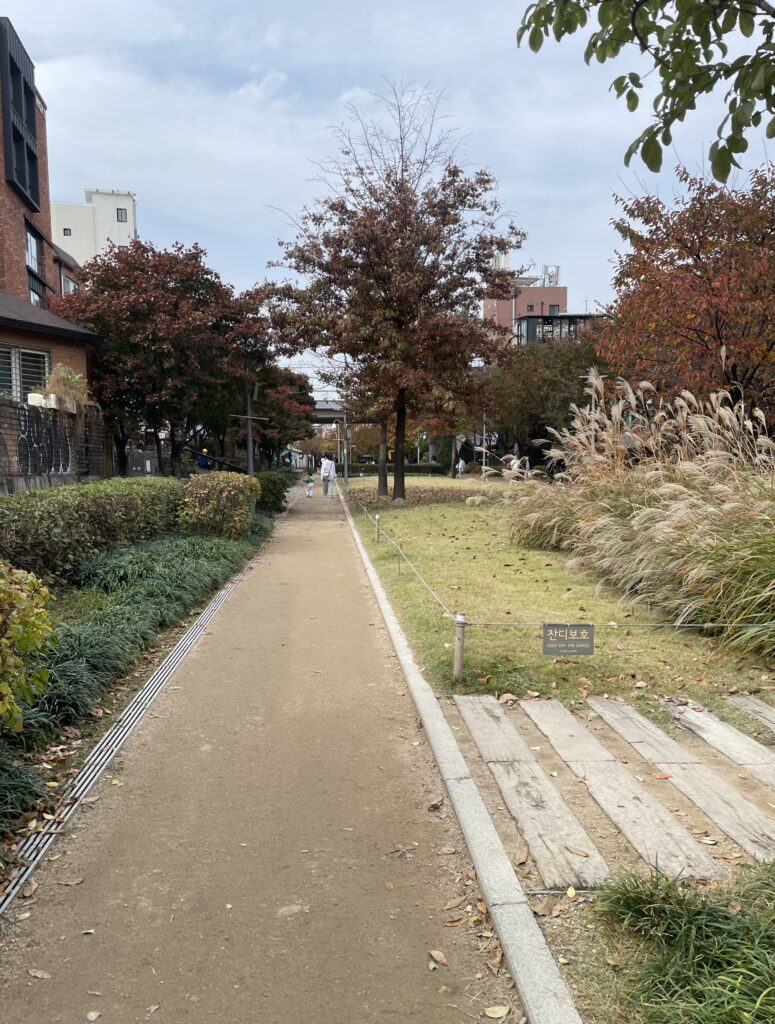
Getting Around Seoul
There are numerous ways to get around Seoul. The city is well-connected with subway (metro) lines, buses, taxis and ride-sharing apps.
Get a reloadable T-Money card at GS25 or 711. You can put money on it to take the subway, bus, and even some taxis in Seoul. Below are all the ways you can get around Seoul!
- Subway / Known as Seoul Metro
- Buses
- Taxis / Usually white/silver taxis
- Foreign Taxi / Orange taxis, drivers usually speak English
- KakaoT / ride-sharing app, similar to Uber and Grab
TIP: Google Maps doesn’t work in Seoul for walking, so download and use KakaoMaps
Final Thoughts on Your 3-Day Seoul Itinerary
Seoul is a city of contrasts, where ancient palaces meet modern skyscrapers and traditional markets sit beside luxury shopping districts.
Each neighborhood offers its own rhythm, from the street food of Myeongdong to the artsy charm of Hongdae and the high-end energy of Gangnam.
If you have extra time, consider extending your stay to explore more local areas like Itaewon or Dongdaemun, or even plan a day trip from Seoul to places like Nami Island or the DMZ. You’ll gain a deeper appreciation for how diverse and dynamic the city truly is.
No matter how long you stay, Seoul’s blend of culture, food, and city life guarantees you’ll want to come back again.
Is 3 days enough for Seoul?
Three days in Seoul is enough to see the city’s main attractions, like Gyeongbokgung Palace, Myeongdong, Insadong, and Namsan Tower, but you’ll only scratch the surface.
If you want to explore more neighborhoods or take a day trip to places like DMZ or Suwon, plan 4–5 days instead.
What is the best area to stay in Seoul for first-time visitors?
Myeongdong and Insadong are the most convenient areas for first-timers. Both are central, close to top attractions, and well connected to the subway. Hongdae and Itaewon are great for nightlife and food, while Gangnam offers a more upscale experience.
What’s the best way to get around Seoul?
The subway is the best and cheapest way to travel around Seoul. It’s clean, efficient, and easy to navigate in English. You can also use T-Money cards for buses and subways, and taxis are widely available through apps like Kakao T.
How much money do I need per day in Seoul?
Budget travelers can get by on around $50–70 USD per day, including food, transport, and attractions. Mid-range travelers should budget $100–150 USD per day, while those seeking luxury can expect $200+ USD daily.
